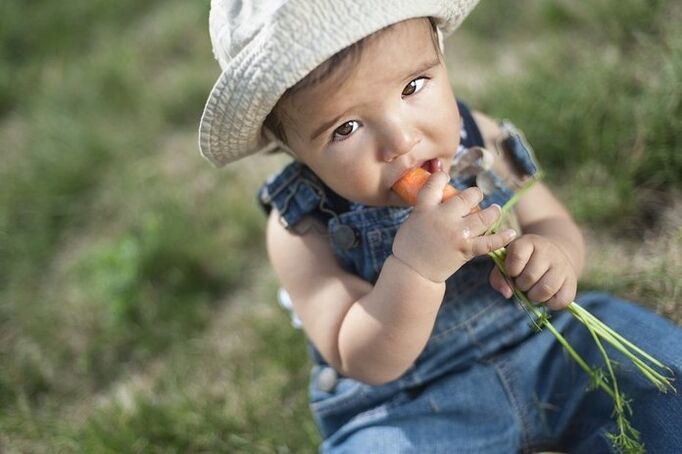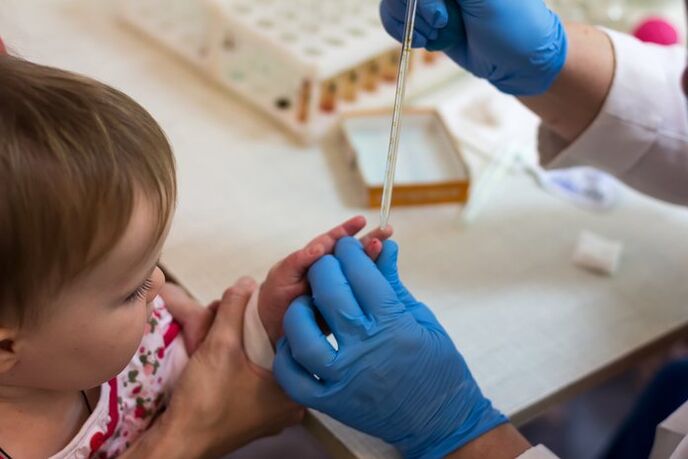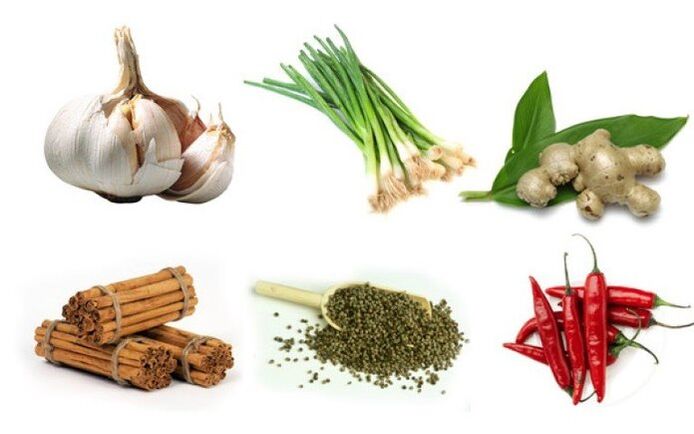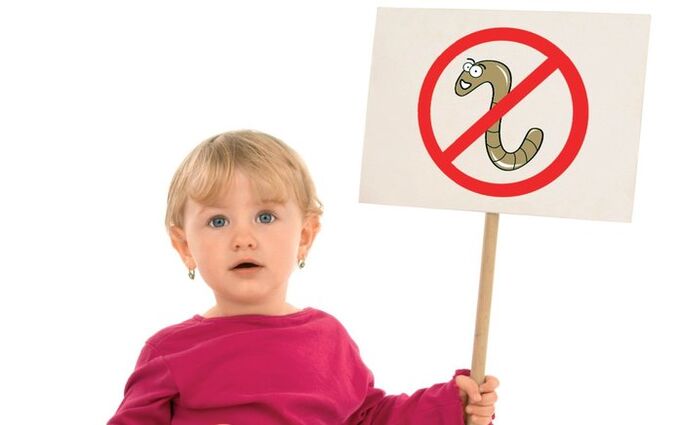
Helminths or worms is the common name for parasitic worms that live in the human body. Most of them live in the intestinal tract, but some go beyond it. Children are especially susceptible to infection with worms. Worms can seriously harm a child due to a strong enough immunity that is not able to kill parasites and a long latent infection period. This is primarily due to severe intoxication, allergic reactions and, in certain cases, organ damage.
In this material, we will consider the main causes of helminth infection, their types, as well as their treatment methods. This applies to both traditional and conventional medicine.
Causes of infection
First of all, it should be noted that it is almost impossible to protect a child from infection with worms. This refers to geohelminthiasis and is related to their mode of infection. However, there are other types of worms with different infection mechanisms. We will discuss geohelminthiasis and other types of worms in more detail below.
Worms are evolvingin soil and water, after that they enter the human body and lay eggs there. Then they return to the ground or water with the feces and the cycle repeats. There is a high probability of contracting geohelminthic infections when eating dirty fruits and vegetables. Infection is also possible through dirty hands or the skin of the feet.
Through infectioncontact with animals- not a myth. When you come in contact with, play with, and interact with an already infected animal, there is a non-illusory chance of getting infected with worms. Eggs fall on the skin or clothes, where they continue to mature and eventually enter the body.
It occurs due to infection with biohelminthsconsuming less processed meat and fish products. Particularly dangerous are undercooked kebabs, poorly salted lard, sushi, unprocessed milk and undercooked fish. Along with worms, there is also a chance of getting an intestinal infection while consuming these products.
Infectionthrough insect bites- it happens quite rarely, because in most cases the beetles lay their larvae under the skin of the victim. However, some types of worms are spread by insects.
With a strong immune system, you are less likely to get infected with worms. Moreover, over time, a person simply develops resistance to worms in his territory. They don't have time to hatch, or they simply die shortly after hatching. However, protection against worms weakens when you move to a new area or when your immune system weakens.
Types of worms
There are about 300 species of worms, but 70 are common. These types can be divided into three broad categories:
- Nematodes or roundworms.Often children are infected with this type of worms. This species includes pinworms, whipworms, trichinella and roundworms.
- Tapeworms or cestodes.Infection with this species occurs through poorly processed meat. This species includes tapeworms, tapeworms and echinococci.
- Trematodes or parasites.Often, worms of this species cause opisthorchosis, fascioliasis, schistosomiasis and paragonimiasis.
In most cases, worms are parasitic in the intestines, but their eggs can be spread throughout the body along with the blood. As a result, worms can begin to multiply in the liver, gall bladder, muscle tissue, lungs and even the brain.
Symptoms
Given that worms are parasitic organisms, infection with them does not occur immediately. After all, the purpose of the parasite is to avoid the host's attention for as long as possible. Therefore, symptoms appear either in case of multiple infections or after a long latent period.
Typically, the first symptoms appear only 2-4 weeks after the worm eggs enter the body. All symptoms are usually caused by intoxication of waste products of helminthosis. In certain cases, that is, when the child's immunity is reduced, infection with helminths can appear earlier.
betweenthe main symptoms of worms in childrencan be distinguished:
- Increased appetite without weight gain;
- Increased salivation;
- Feeling of pain in the stomach, nausea and unstable stool;
- Dizziness and headache;
- Appearance of allergic reactions;
- Sleep disturbance, worsening of sleep and increased irritability;
- Increased hair loss and splitting of nails;
- Frequent inflammatory processes of the nasopharynx and genitourinary system.
With long-term infection, developmental delays, dysfunction of internal organs, and neurological abnormalities are observed.
It should be noted that a strange smell from the child's mouth, abdominal pain, frequent hiccups and grinding teeth at night do not indicate worm infection in any way. These symptoms are just a myth.
Diagnostic features

Given the variety of symptoms of infection with this parasite, making an accurate diagnosis is not the easiest task. First of all, you need to dostool analysisfor the presence of parasite nests. But this is not the most reliable method. The fact is that in certain cases, the body of the carrier may contain several individuals of the same sex who are not capable of reproduction. In addition, some species rarely lay eggs, which makes it difficult to make an accurate diagnosis. Therefore, stool tests for worms are carried out three times with an interval of several days, because it is necessary to catch the exact moment of reproduction of parasites.
Parasite infection can also be indicated by high levels of eosinophils along with low hemoglobin.general blood test.Scraping for enterobiosis and examination of the abdominal cavity with ultrasound or radiography are also used for diagnosis. To clarify the diagnosis, doctors can refer to the biological analysis of urine and feces, as well as immunological studies.
After determining the exact type of parasite, as well as the level of damage to the body, treatment can be started.
Methods of treating worms in children
The main method of treating helminths is, of course, drugs. However, in some cases, the use of traditional medicine is also allowed. It should be remembered that in most cases folk remedies are not strong enough to cope with a moderate or even severe infection. They should be used as an aid. Of course, traditional medicine also has a number of limitations. These and other tools will be discussed in more detail below.
Medicines

Drug treatment for helminth infection is aimed at destroying the worms and reducing the level of toxins released by them. When treating worms, especially in children, it is highly undesirable to use broad-spectrum drugs. The fact is that they have a very strong effect and their use, even in the correct dosage, can cause serious problems. Moreover, the wrong medicine can cause more harm than the parasites themselves. Therefore, it is important to make an accurate diagnosis and determine what kind of parasites the child is infected with.
To remove toxins, vitamin complexes with B and C vitamins, glucose solutions and infusions of water-salt solution are used. In some cases, antihistamines and diuretics are also used. If the heart and liver are damaged, hormonal therapy may be required. Enzyme preparations that improve digestion, as well as enterosorbents that remove waste products of parasites from the body, are often used to increase the effect.
Will folk remedies help?

In general, doctors do not recommend using folk methods to treat worms. This is primarily due to the fact that the power of folk remedies is often not enough to completely destroy parasites. However, despite the fact that folk remedies cannot be an alternative to traditional means, this does not mean that they should not be used. On the contrary, they will be an excellent addition to drug therapy. Among the most effective and safe folk remedies are the following.
Vegetable oilsIt is an effective method of combating almost all types of helminths. The most effective are apricot, cedar and sea buckthorn oils, but a safer choice for children is linseed or hemp oil. Oil in its pure form should be taken three times a day before meals, one teaspoon. If your child refuses to eat, add it to porridge or soak bread in oil. The course of oil treatment is one week, after which you need to take a break for two weeks.
It is another effective treatment for helminthspumpkin seeds. This is primarily because they contain cucurbitin, a rare amino acid that kills worms. Pumpkin seeds can be consumed raw or prepared with milk. In raw form, 120 grams are consumed for children from three to seven years old, 200 grams for children from seven to eleven years old, and 300 grams for children up to thirteen years old. You can make milk from the seeds, put 200 grams of seeds through a meat grinder, pour two cups of hot water on them and brew the drink in a water bath for a quarter of an hour. Then we strain the broth and feed it to the child before meals during the day.
garlicIt is also a common remedy for helminthiasis. It is often used to prevent infection by parasites, as well as as an adjuvant for enterobiosis and ascariasis. It is used like this: finely chop two cloves of garlic and pour a glass of milk over it. The resulting drink is consumed twice a day, a quarter cup, for four days.
Medicines are often used for treatment purposesenemaswith herbal decoctions. This is done to remove parasites from the intestinal lumen. Decoctions of wormwood, chamomile and other herbs are suitable for these purposes. You can also use the milk-garlic enema, the recipe of which is given above. When using an enema, it is important that its temperature is not lower than room temperature and its volume is not more than 100 milliliters. It is also important to increase the amount of fluid consumed in the form of mineral water or fruit juices.
Barrier methodIt is most often used for helminthiasis caused by pinworms. Its essence is to close the lumen of the large intestine using special tampons moistened with vegetable oil or petroleum jelly. This is done so that adult worms do not migrate to the surface of the anus and continue to reproduce. The child's anal passage is closed with tampons within a month. It should be noted that this method is not effective in cases of extraintestinal forms of helminthosis or severe enterobiosis.
You should always consult and get your pediatrician's approval before using any of the above methods.
In addition to the means aimed at direct control of parasites, auxiliary means can be used. Any recipe that helps improve digestion and remove toxins from the body will help. Foods high in B and C vitamins are also useful. You should consult your doctor before use.
Prevention of helminthiasis in children

As we have already discovered, the vast majority of cases of worm infection are transmitted through the oral cavity. Therefore, prevention of parasite infection is included in the first placeto observe the rules of personal hygiene. In addition, wash vegetables and fruits thoroughly before eating, and make sure that fish, meat and dairy products undergo sufficient heat treatment. If you have pets, preventive anthelmintic therapy should be carried out. And finally, you need to keep your house clean.
In addition, there is an opinion that to prevent helminthosis, it is necessary to regularly take antihelminthic drugs. This idea is very controversial in the medical field. Some doctors believe that the preventive use of such drugs does not guarantee re-infection and creates additional stress on the body. This group of doctors is enough to follow basic hygiene rules to reduce the chance of infection. The second group of doctors believe that, given children's neglect of hygiene rules, it is simply impossible to do without the preventive use of such drugs. If the child is constantly in contact with animals that come to the street, the issue of prevention becomes more acute.
One way or another, only you can decide whether it is worth using anti-worm drugs for preventive purposes. However, it is worth considering if:
- You are planning a trip to southern countries;
- The child goes to kindergarten;
- At home there are animals that visit the street;
- Children play in the sandbox or have frequent contact with the ground;
- Children spend a lot of time in nature.






































